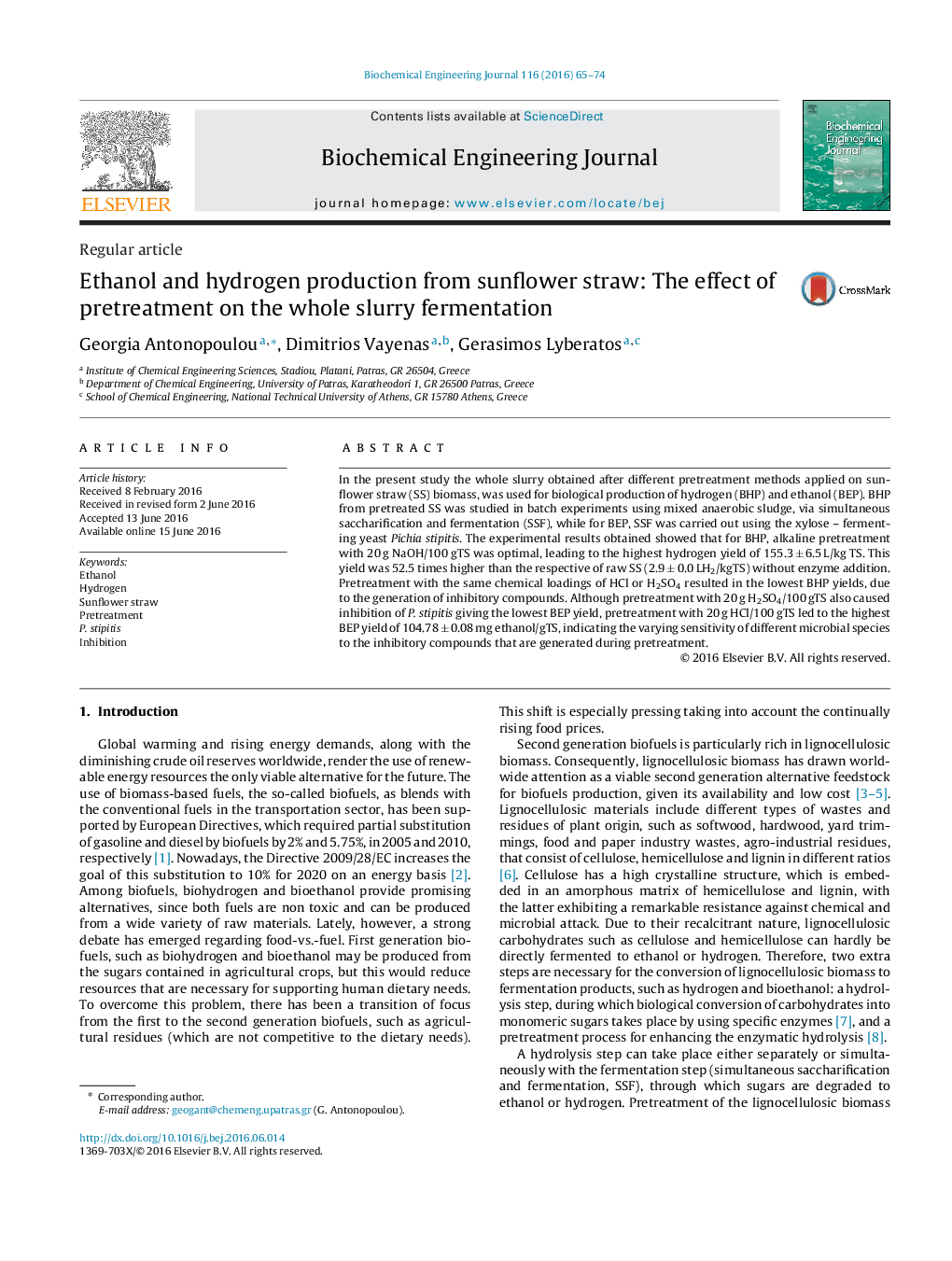| Article ID | Journal | Published Year | Pages | File Type |
|---|---|---|---|---|
| 6450461 | Biochemical Engineering Journal | 2016 | 10 Pages |
â¢20  g NaOH/100 gTS led to the highest BHP yield of 155.3 ± 6.5 L/kg TS.â¢20 g HCl-H2SO4 /100 gTS resulted in the lowest BHP yields, due to inhibition.â¢20 g HCl/100 gTS led to the highest BEP yield of 104.78 ± 0.08 mg ethanol/gTS.â¢P. stipitis was sensitive in high acetic acid and 5-HMF concentration.â¢Different sensitivity of microbial species to the inhibitory compounds.
In the present study the whole slurry obtained after different pretreatment methods applied on sunflower straw (SS) biomass, was used for biological production of hydrogen (BHP) and ethanol (BEP). BHP from pretreated SS was studied in batch experiments using mixed anaerobic sludge, via simultaneous saccharification and fermentation (SSF), while for BEP, SSF was carried out using the xylose - fermenting yeast Pichia stipitis. The experimental results obtained showed that for BHP, alkaline pretreatment with 20 g NaOH/100 gTS was optimal, leading to the highest hydrogen yield of 155.3 ± 6.5 L/kg TS. This yield was 52.5 times higher than the respective of raw SS (2.9 ± 0.0 LH2/kgTS) without enzyme addition. Pretreatment with the same chemical loadings of HCl or H2SO4 resulted in the lowest BHP yields, due to the generation of inhibitory compounds. Although pretreatment with 20 g H2SO4/100 gTS also caused inhibition of P. stipitis giving the lowest BEP yield, pretreatment with 20 g HCl/100 gTS led to the highest BEP yield of 104.78 ± 0.08 mg ethanol/gTS, indicating the varying sensitivity of different microbial species to the inhibitory compounds that are generated during pretreatment.
